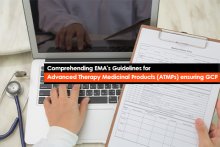It is challenging for medical writers to ensure that their project’s content, style, and format are high quality. Even the best medical writers may make a mistake. Therefore, it is important to have a quality check of the documents. Quality Control (QC) experts look at a document with a set of “fresh eyes,” which can identify mistakes that an author might overlook. Hence, QC reviews are critical to Regulatory documents.
To guarantee the highest content quality, there must be a robust process for document development. Hence, it is vital to have a Standard Operating Procedure (SOP) for drafting, reviewing, and approval. Quality is not only about checking the spacing, abbreviations lists, or capitalization. Rather, it is also about how to offer and use your scientific and research expertise and make the document more precise, brief, and aligned with the competent Regulatory requirements. Quality is also about proactively ensuring to write correctly the first time so that you have fewer comments during the review, leading to minimal changes and easy finalization.
Rework post finalization can occur for the following reasons:
- a change to the development strategy needing substantial changes
- when Regulatory Authority rejects the document or requests alterations
- misinterpretations
- typographical errors
The first two (02) reasons are not likely to be the writer’s mistakes and would not necessarily be counted as the result of a poor-quality document. However, the last two (02) points are directly connected to poor writing or understanding and interpretation of the concept. Based on the type of the document being prepared and its intended use/audience, a focused quality review must be conducted.
What is a QC Review?
A QC review is to ensure that everything in the document is right. ‘Everything’ here includes the following:
- Data must be validated against a source
- Written language must exactly represent the source
- Links (internal and external) must be clicked to confirm that they refer to the intended material
- Grammar, punctuation, and abbreviations must be examined against a style guide
- Document style, layout, and formatting must be checked for uniformity
Prep Work Required at the Beginning of the Project
- Who will be performing the QC review(s)? Will there be more than one (01) QC expert, or will only a specific person be your main point of contact? If so, who will oversee that operation?
- When should the QC review(s) occur? You should look at the project timeline and try to determine when you plan to send your document and source files to your QC expert and when they will return their comments to you. This should happen before your project is presented to your review team for the first time. This may be a rough estimate, but you may stay in touch with your QC expert and change the timing as necessary while the project is being developed.
- What does your QC expert need from you? What more can your QC expert need from you in addition to your project document and source files?
Also, a template can be used to maintain the quality of the document across the organization. Using templates will help in maintaining standardization and will also save time for the medical writers while they draft the document. The QC expert can also check whether a correct template is used by the writer.
QC Process and Checklist
It is necessary to have a process (which is also called SOP) to ensure that the drafts are top-notch. Ideally, there is a process that every company providing medical writing services follows, but in case there’s no set process, it makes sense to have one in place for a QC review of the documents. A great way to start building your own QC process is by creating a QC checklist that must identify every item that needs to be verified.
The checklist for verifying the accuracy of data can have the following:
- Check graphs
- Does the graph resemble the source file if it was recreated from a source?
- Is the graph accurate if it was made from a data table?
- Are the layout and formatting consistent?
- Do the axes have labels?
- Is a header present?
- Does a legend exist?
- Is the message understood?
- Is the caption format proper?
- Check tables
- Do the table's data and the source file's data match?
- Are the layout and formatting consistent?
- Is a header present?
- Are the column/row headers properly labeled?
- Is the message understood?
- Is the caption format proper?
- Are the legends used described?
- Are the footnotes provided appropriately?
- Are all the abbreviations used in the table explained?
- Are tables numbered consistently?
- Check written claims
- Does the source back up the claim? (Is it entirely true?)
- Do any of the claim’s data correspond to the source?
Apart from this checklist, an audit trail should be carried out, which will ensure that all the changes and revisions suggested by the QC expert are incorporated, and the final document is up to the mark and is put together in a way where the document’s quality is not compromised at any stage.
With Quality Control, medical writers ensure that the document is well-formatted and has a consistent style. If the document does not meet the quality standards or is not in line with the Regulatory guidelines, there are chances that you may face reputational loss. Therefore, it is critical that you partner with a company that employs the finest medical writers in the industry to create quality documents for the very first time.
Freyr’s medical writing team has a clear-cut understanding of Regulatory and scientific guidelines in multiple therapeutic areas and will be an extension to your team in providing accurate, evidence-based, error-free documents while adhering to stringent timelines and high quality. To know more about Regulatory medical writing, reach out to Freyr.





